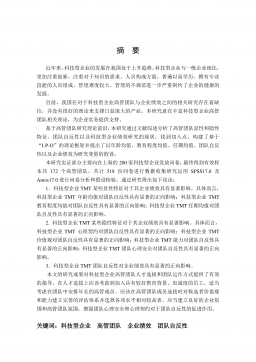基于欧债危机视角的商业银行系统性风险比较研究
VIP免费
摘 要
始于希腊的主权债务危机逐渐演变成为整个欧元区的债务危机,随着欧债危
机的不断深化,世界级评级机构大面积下调欧洲银行业的信用评级,包括巴克莱
银行、汇丰银行和苏格兰皇家银行等在内的多家英国大银行都遭遇了标普的降级。
与此同时,欧洲银行业面临包括信贷风险、流动性风险和盈利风险在内的多重风
险,而且风险不断传递逐步增大。危机的不断演进与深化使得全球银行业都面临
着系统性风险爆发的可能性。
欧盟及世界各国都针对危机带来的系统性风险问题作出了相应的举措,本论
文以“欧洲主权债务危机—欧洲商业银行系统性风险—系统性风险—全球商业银
行系统性风险”为主要脉络,对欧债危机后,欧洲、美国、中国的商业银行的系
统性风险进行度量,并对其变化情况与应对措施进行相关的比较分析。
全文共分五大部分:
第一部分是问题提出,主要是综述国内外专家学者对系统性风险、银行系统
性风险的研究成果。
第二部分是理论基础,首先是对系统性风险与银行系统性风险的界定,其次
阐述了银行系统性风险的特征与来源,最后结合新的经济环境,银行系统性风险
产生的原因进行了相关分析。
第三部分是主线,介绍了欧债危机形成的原因及对全球经济造成的影响,分
别对欧洲、美国、中国的经济与银行业的影响进行了相关的剖析,归纳出欧债危
机后全球商业银行系统性风险所暴露的问题。
第四部分是模型选择与实证,在比较的基础上选定 β系数估价模型,选取了
欧洲、美国、中国具有代表性的几个商业银行作为样本银行,运用夏普的市场模
型对其β系数进行测算,得出样本银行的系统性风险在金融危机、欧债危机爆发
之时都有所增大。但各样本银行的 β值大都处于 1以下,说明各银行的系统性风
险都普遍低于市场的系统性风险。
第五部分是借鉴欧盟与美国的应对措施经验,提出防范我国银行爆发系统性
风险的控制对策。
本文的主要观点是,由于危机的外溢性与负外部性,银行的系统性风险会因
此而受到影响。我国实证结果表明,银行系统性风险在两次世界性金融危机爆发
之后均有显著增大的情况。为防范银行系统性风险传染与外溢,必须维持银行宏
观稳定与微观审慎监管,在加强主权信用评级机构建设的基础上,加快针对银行
系统性风险的金融法规建设;注重商业银行系统性风险评估。
关键词:欧洲主权债务危机 商业银行 系统性风险
ABSTRACT
European debt crisis which is originated from the Greek sovereign debt crisis has
gradually evolved into the whole of the Europe zone's debt crisis. As the European debt
crisis continues to deepen, world-class rating agencies downgrade European banks
credit rating on a large scale, including Barclays bank, HSBC and the Royal Bank of
Scotland. Many of Britain's big banks are downgraded the S&P. At the same time, the
European banking faces multiple risks, including credit risk, liquidity risk and earnings
risk, and risks transfer gradually and increase constantly. With the crisis unceasingly
evolution and deepening, the global banking industry faces the possibility of systemic
risk outbreak.
The European Union and all countries in the world has made corresponding policy
measures to against the problems of systemic risk with the crisis. This article takes
"systemic risk - the European sovereign debt crisis in - the European systemic risk of
commercial bank - global systemic risk of commercial bank" as the main vein, measures
systemic risk of commercial Banks in Europe, the United States, China after the
European debt crisis, and analyses and researches the changing situation and policy
countermeasures.
This article is divided into five parts:
The first part is the problem putting forward. This part summarizes research
achievements on systemic risk and bank systemic risk of domestic and foreign experts
and scholars.
The second part is the theoretical basis. Firstly, this part elaborates the definition of
systemic risk and bank systemic risk, and then expounds the characteristics and source
analysis of the bank systemic risk, finally sets forth the new causes of bank systemic
risk combining with the new economic environment.
The third part is the main line of this article. First of all, this part introduces the
causes of the formation of the European debt crisis and the influences of the global
economy. then respectively has carried on the of related research and analysis on the
influence of the European debt crisis on economy and the banking industry in Europe,
the United States and China. Finally, this part sums up problems exposed in
management of global commercial bank systemic risk after the European debt crisis.
The fourth part is the model selection and empirical research. After selected the
beta coefficient evaluation model, this part chooses representative commercial bank of
China, Europe, the United States as samples, uses the market model to measure the beta
coefficient. It is concluded that the sample bank systemic risk has increased after
financial crisis and the European debt crisis. However, the sample Banks beta is mostly
below 1. It suggests that banks systemic risk are generally lower than the market
systemic risks..
The fifth part takes from the experience of the European Union and the US that
measures to guard against systemic risk as lessons, and put forward suggests to to guaed
against bank systemic risk.
The main point of this article is that the crisis has spillover effect and negative
externality, so the systemic risk of banks will be affected. The empirical results show
that after two worldwide financial crisis, systemic risk were significantly increased. To
prevent systemic risk, our country must maintain bank micro and macro stability and
strengthen macro and micro prudential regulation. On the basis of strengthening the
construction of sovereign credit rating agencies, our country should accelerate the
construction of financial regulations to the banking systemic risk, and focus on the
commercial bank systematic risk assessment
Key Word:the European Debt Crisis, Commercial Bank, Systemic
Risk
目录
中文摘要
ABSTRACT
第一章 绪论 .............................................................................................................. 1
§1.1 研究背景与意义 ............................................................................................ 1
§1.1.1 研究背景 ................................................................................................. 1
§1.1.2 研究意义 ................................................................................................. 2
§1.2 文献综述........................................................................................................ 2
§1.2.1 国外相关研究 ......................................................................................... 3
§1.2.2 国内相关研究 ......................................................................................... 6
§1.2.3 文献综述小结 ......................................................................................... 7
§1.3 研究内容与研究方法 .................................................................................... 8
§1.3.1 研究内容 ................................................................................................. 8
§1.3.2 研究的主要方法 ..................................................................................... 9
§1.4 本文的框架结构 .......................................................................................... 10
第二章 银行系统性风险的相关理论基础 .............................................................. 11
§2.1 银行系统性风险的涵义与本质特征 ........................................................... 11
§2.1.1 银行系统性风险的概念界定 ................................................................ 11
§2.1.2 银行系统性风险的本质特征 ................................................................ 12
§2.2 银行系统性风险来源分析 ........................................................................... 13
§2.2.1 资产价格的剧烈波动............................................................................ 13
§2.2.2 金融脆弱性 ........................................................................................... 14
§2.2.3 货币主义的金融危机............................................................................ 15
§2.2.4 银行挤提模型 ....................................................................................... 17
§2.3 银行系统性风险影响因素 ........................................................................... 18
§2.3.1 金融自由化 ........................................................................................... 18
§2.3.2 银行系统结构特殊的资产负债表 ........................................................ 18
§2.3.3 金融网络体系 ....................................................................................... 19
第三章 欧债危机后的全球商业银行系统性风险现状 ........................................... 21
§3.1 欧债危机简介 .............................................................................................. 21
§3.1.1 欧债危机形成原因 ............................................................................... 22
§3.1.2 欧债危机动摇欧元区稳定 .................................................................... 25
§3.1.3 欧债危机重挫全球金融市场 ................................................................ 26
§3.2 欧债危机爆发后欧洲银行系统性风险现状 ................................................ 29
§3.2.1 欧洲各国及其国内银行信用评级下降 ................................................. 30
§3.2.2 资产减记致使欧洲银行业利润下滑 .................................................... 31
§3.2.3 欧洲银行业面临严重流动性风险问题 ................................................. 33
§3.2.4 欧洲银行业资产负债表严重恶化 ........................................................ 34
§3.3 欧债危机爆发后美国银行业系统性风险现状 ............................................ 35
§3.3.1 美国主要银行面临大规模风险敞口 .................................................... 35
§3.3.2 美国多家银行遭遇信用评级下降 ........................................................ 36
§3.3.3 美国遭遇金融机构倒闭潮 .................................................................... 37
§3.4 欧债危机爆发后中国银行业系统性风险现状 ............................................ 38
§3.4.1 中国各银行流动性不断受到冲击 ........................................................ 40
§3.4.2 中国商业银行不良贷款率出现上升势头 ............................................. 41
§3.4.3 中国银行业面临多重考验 .................................................................... 42
§3.5 各国银行系统性风险暴露的主要问题归纳 ................................................ 43
§3.5.1 信用风险集中性暴露问题 .................................................................... 44
§3.5.2 资产减记问题 ....................................................................................... 44
§3.5.3 流动性风险加大问题............................................................................ 46
第四章 基于 β系数的系统性风险度量模型分析................................................... 47
§4.1 系统性风险度量模型介绍 ........................................................................... 47
§4.1.1 早期系统性风险度量方法的缺陷 ........................................................ 48
§4.1.2 CoRisk 模型 CoVaR 模型与 β系数度量模型介绍 ............................... 48
§4.1.3 三种模型风险度量方法的局限性 ........................................................ 51
§4.2 β 系数的估计模型选择 ............................................................................... 51
§4.2.1 市场模型 ............................................................................................... 52
§4.2.4 β 系数的经济意义 ................................................................................ 52
§4.3 β 系数的估计模型重要影响因素 ................................................................ 53
§4.3.1 市场组合收益率 ................................................................................... 53
§4.3.2 收益率时间段 ....................................................................................... 53
第五章 模型实证..................................................................................................... 55
§5.1 样本选取及说明 .......................................................................................... 55
§5.1.1 欧洲上市银行样本选取及说明 ............................................................ 55
§5.1.2 美国上市银行样本选取及说明 ............................................................ 55
§5.1.3 中国上市银行样本选取及说明 ............................................................ 56
§5.2 数据的选取与计算 ...................................................................................... 57
§5.3 实证过程...................................................................................................... 58
§5.4 实证结果比较分析 ...................................................................................... 60
§5.4.1 欧洲样本银行实证结果分析 ................................................................ 60
§5.4.2 美国样本银行实证结果分析 ................................................................ 61
§5.4.3 中国样本银行实证结果分析 ................................................................ 62
§5.4.4 样本银行实证结果综合分析 ................................................................ 63
§5.5 实证结果的局限性 ...................................................................................... 64
第六章 防范债务危机与把控银行系统性风险对策建议 ....................................... 65
§6.1 欧债危机爆发后欧美商业银行系统性风险应对启示 ................................ 65
§6.1.1 欧洲银行业系统性风险的应对分析 .................................................... 65
§6.1.2 美国银行业系统性风险的应对分析 .................................................... 67
§6.2 防范欧债危机与把控银行系统性风险的对策与建议 ................................ 68
§6.2.1 加强我国地方债务的规模控制与风险管理 ......................................... 69
§6.2.2 加快针对银行系统性风险的金融法规建设 ......................................... 70
§6.2.3 加紧完善系统性的压力测试管理框架与管理机制 ............................. 70
§6.2.4 加速构建我国自主主权信用评级机构 ................................................. 71
§6.3 总结与展望 .................................................................................................. 72
参考文献 .................................................................................................................... 73
在读期间公开发表的论文和承担科研项目及取得成果 ........................................... 77
致谢
78
相关推荐
-
公务员思想政治教育研究VIP免费
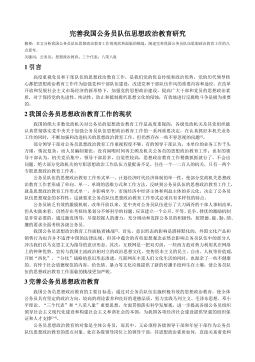
 2024-10-15 30
2024-10-15 30 -
在线社会网络中用户行为的实证分析与机制建模研究VIP免费
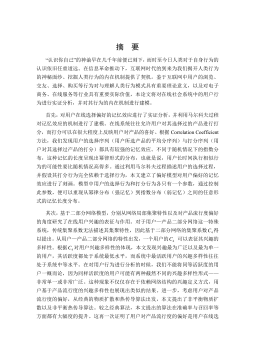
 2025-01-09 6
2025-01-09 6 -
智能优化方法对神经网络的改进及应用研究VIP免费
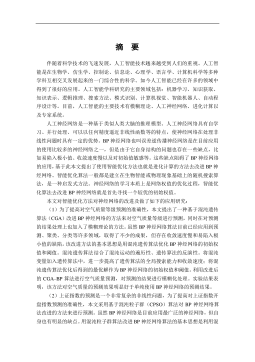
 2025-01-09 6
2025-01-09 6 -
鲜切哈密瓜保鲜技术研究VIP免费
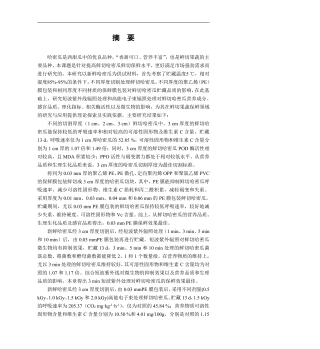
 2025-01-09 8
2025-01-09 8 -
小城镇道路网级配方法及应用研究VIP免费

 2025-01-09 6
2025-01-09 6 -
医学信息集成测试系统的研究与实现VIP免费
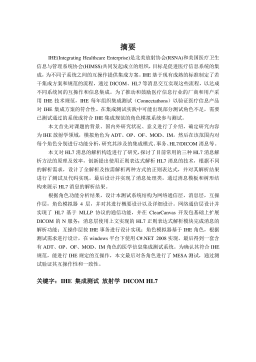
 2025-01-09 7
2025-01-09 7 -
余热驱动氨水吸收式制冷系统的理论及实验研究VIP免费
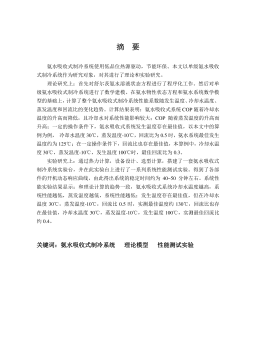
 2025-01-09 7
2025-01-09 7 -
喷雾降温技术适用性及热环境研究VIP免费
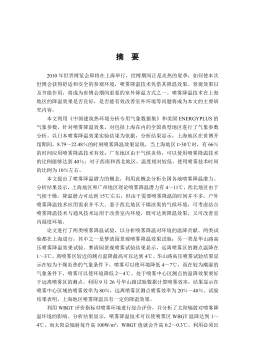
 2025-01-09 9
2025-01-09 9 -
收缩—扩张喷嘴的气泡雾化数值模拟VIP免费
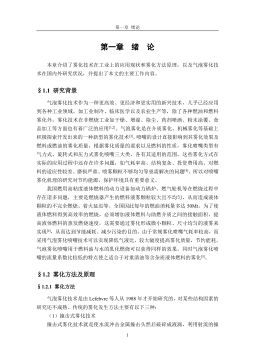
 2025-01-09 8
2025-01-09 8 -
支持供应链的工作流系统结构及其计划与调度的研究与应用VIP免费
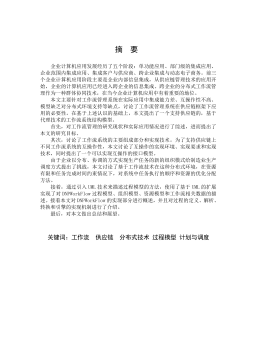
 2025-01-09 11
2025-01-09 11
作者:赵德峰
分类:高等教育资料
价格:15积分
属性:82 页
大小:3.75MB
格式:PDF
时间:2025-01-09
作者详情
相关内容
-

医学信息集成测试系统的研究与实现
分类:高等教育资料
时间:2025-01-09
标签:无
格式:PDF
价格:15 积分
-

余热驱动氨水吸收式制冷系统的理论及实验研究
分类:高等教育资料
时间:2025-01-09
标签:无
格式:PDF
价格:15 积分
-

喷雾降温技术适用性及热环境研究
分类:高等教育资料
时间:2025-01-09
标签:无
格式:PDF
价格:15 积分
-

收缩—扩张喷嘴的气泡雾化数值模拟
分类:高等教育资料
时间:2025-01-09
标签:无
格式:PDF
价格:15 积分
-

支持供应链的工作流系统结构及其计划与调度的研究与应用
分类:高等教育资料
时间:2025-01-09
标签:无
格式:PDF
价格:15 积分


